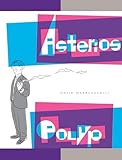At the risk of being exposed as a graphic novel novice, my problem with the genre has always been that graphic novels never quite seem to take full, exuberant advantage of the potential afforded by the form.
Too often, no matter how visually accomplished and how intricately plotted, the characters (paradoxically perhaps) are too one-dimensional. To put it simply, they are mopes. Chris Ware’s Jimmy Corrigan: The Smartest Kid on Earth is a towering achievement of intricate artistry and bifurcated plotting, but Jimmy himself doesn’t buzz and hum along with the rest of the presentation that Ware provides.
 In my experience with graphic novels, Art Spiegelman’s Maus is the towering exception to this rule. The two-volume set eschews the angst to give a gripping history lesson. The books were, for me, a stirring departure from angst-filled graphic novels like Chester Brown’s I Never Liked You, and Daniel Clowes’ Ghost World, which tread the same emotional ground as Corrigan.
In my experience with graphic novels, Art Spiegelman’s Maus is the towering exception to this rule. The two-volume set eschews the angst to give a gripping history lesson. The books were, for me, a stirring departure from angst-filled graphic novels like Chester Brown’s I Never Liked You, and Daniel Clowes’ Ghost World, which tread the same emotional ground as Corrigan.
And so I picked up David Mazzucchelli’s Asterios Polyp knowing next to nothing about it and wondering if it too would shroud an awkward, angst-filled character in glorious, hand-drawn finery.
 The answer is no, but before I get to that, I should note that Polyp is a gorgeous book, an object with beautiful textures and colors within and without. This isn’t a new insight, but Polyp reinforced for me that these lavishly produced graphic novels will be among the niches in which the future of the physical book is secure. I would not have wanted to experience the book via the wan light of the screen.
The answer is no, but before I get to that, I should note that Polyp is a gorgeous book, an object with beautiful textures and colors within and without. This isn’t a new insight, but Polyp reinforced for me that these lavishly produced graphic novels will be among the niches in which the future of the physical book is secure. I would not have wanted to experience the book via the wan light of the screen.
Polyp the book is pleasingly tangible, and so is Polyp, the book’s eponymous protagonist. Asterios Polyp is an architect, drawn in sleek geometric form by Mazzucchelli. Polyp’s twin brother Ignazio died at birth and narrates the story from the ether, while also appearing regularly in Polyp’s dreams. Unlike Corrigan, Polyp’s as assured and complicated a character as you’ll see stride through a graphic novel (this side of the super heroes of course). Mazzucchelli threads two plots in alternating chapters, one plot following Polyp from birth to a successful career and to marriage and the other following an older Polyp beginning with his 50th birthday, when his apartment catches fire and he gets on a train to go as far as his money will take him. Polyp is drawn in the classic mold of the hard-headed architect that so many writers have found to be fruitful archetype. But unlike the stony Howard Roark, Polyp is brimming with contradictions and a capacity to evolve under his architect’s mask.
Joining Polyp is a colorful cast of characters, who, like Polyp with his architectural angularity, have their own traits subtly mirrored in the style Mazzucchelli uses to draw them. At its heart, Polyp is a love story about Polyp and Hana, a sculptor. In some ways the plot follows a more recognizable romance (or even romantic comedy) trajectory, but Mazzucchelli has many other threads going and delves into – with glorious abstract detail and inventive art and hand lettering – questions of free will, theories of representation, and the nature of the self. But the path of Polyp and Hana is the most moving element of the book. Here Mazzucchelli’s artistic cleverness is used to great emotional impact. When Hana and Polyp are getting along, they are drawn in with same line weight and color, but when they aren’t, Polyp becomes a jagged, assembly of orthogonal solids, while Hana becomes sketchy and impressionistic.
A note: It took me about two hours to read this book. The book lists for $30 (Amazon has it for $20). It was a very immersive two hours, and the pages are detailed and would support repeated readings. It occurred to me that most books occupy your time for many more hours but often cost less. But its also true that few books are as engrossing and offer a visual experience on this level. A better analogy is a DVD of a favorite film, also offering two hours of immersion and bearing repeated watching, but costing more than a paperback might.
Another note: I know next to nothing about Mazzucchelli, but I’ve heard that he is very highly regarded for his Batman: Year One book and also that Polyp, unlike his comic-related projects (no matter how worthwhile), is an opportunity to see his vision unmitigated by the necessary adherence to the the established tropes and tics of characters like Batman. PW said of him, “For decades, Mazzucchelli has been a master without a masterpiece.” Is Polyp a masterpiece (as PW goes on to assert)? It might be. Polyp doesn’t have the mind-bending density of Corrigan, but it has both a novelistic and artistic exuberance that will make me much more likely to reach for it again.








